#e2ddda Color Information
In a RGB color space, hex #e2ddda is composed of 88.6% red, 86.7% green and 85.5% blue. Whereas in a CMYK color space, it is composed of 0% cyan, 2.2% magenta, 3.5% yellow and 11.4% black. It has a hue angle of 22.5 degrees, a saturation of 12.1% and a lightness of 87.1%. #e2ddda color hex could be obtained by blending #ffffff with #c5bbb5. Closest websafe color is: #cccccc.
-
- R 89
- G 87
- B 85
-
- C 0
- M 2
- Y 4
- K 11
● #e2ddda color description : Light grayish orange.
#e2ddda Color Conversion
The hexadecimal color #e2ddda has RGB values of R:226, G:221, B:218 and CMYK values of C:0, M:0.02, Y:0.04, K:0.11. Its decimal value is 14867930.
| Hex triplet | e2ddda | #e2ddda |
|---|---|---|
| RGB Decimal | 226, 221, 218 | rgb(226,221,218) |
| RGB Percent | 88.6, 86.7, 85.5 | rgb(88.6%,86.7%,85.5%) |
| CMYK | 0, 2, 4, 11 | |
| HSL | 22.5°, 12.1, 87.1 | hsl(22.5,12.1%,87.1%) |
| HSV (or HSB) | 22.5°, 3.5, 88.6 | |
| Web Safe | cccccc | #cccccc |
| CIE-LAB | 88.421, 1.17, 2.063 |
|---|---|
| XYZ | 69.873, 72.944, 76.724 |
| xyY | 0.318, 0.332, 72.944 |
| CIE-LCH | 88.421, 2.372, 60.433 |
| CIE-LUV | 88.421, 3.021, 2.917 |
| Hunter-Lab | 85.407, -3.428, 6.523 |
| Binary | 11100010, 11011101, 11011010 |
Color Schemes with #e2ddda
Alternatives to #e2ddda
Below, you can see some colors close to #e2ddda. Having a set of related colors can be useful if you need an inspirational alternative to your original color choice.
#e2ddda Preview
This text has a font color of #e2ddda.
<span style="color:#e2ddda;">Text here</span>This paragraph has a background color of #e2ddda.
<p style="background-color:#e2ddda;">Content here</p>This element has a border color of #e2ddda.
<div style="border:1px solid #e2ddda;">Content here</div>.text {color:#e2ddda;}.background {background-color:#e2ddda;}.border {border:1px solid #e2ddda;}Shades and Tints of #e2ddda
A shade is achieved by adding black to any pure hue, while a tint is created by mixing white to any pure color. In this example, #070605 is the darkest color, while #fcfbfb is the lightest one.
-
#070605
#070605rgb(7,6,5) -
#12100e
#12100ergb(18,16,14) -
#1d1917
#1d1917rgb(29,25,23) -
#28231f
#28231frgb(40,35,31) -
#332c28
#332c28rgb(51,44,40) -
#3e3631
#3e3631rgb(62,54,49) -
#493f39
#493f39rgb(73,63,57) -
#544942
#544942rgb(84,73,66) -
#5f524a
#5f524argb(95,82,74) -
#6a5c53
#6a5c53rgb(106,92,83) -
#75655c
#75655crgb(117,101,92) -
#806f64
#806f64rgb(128,111,100) -
#8b786d
#8b786drgb(139,120,109)
-
#948277
#948277rgb(148,130,119) -
#9d8c82
#9d8c82rgb(157,140,130) -
#a6968d
#a6968drgb(166,150,141) -
#aea098
#aea098rgb(174,160,152) -
#b7aaa3
#b7aaa3rgb(183,170,163) -
#c0b5ae
#c0b5aergb(192,181,174) -
#c8bfb9
#c8bfb9rgb(200,191,185) -
#d1c9c4
#d1c9c4rgb(209,201,196) -
#d9d3cf
#d9d3cfrgb(217,211,207) -
#e2ddda
#e2dddargb(226,221,218) -
#ebe7e5
#ebe7e5rgb(235,231,229) -
#f3f1f0
#f3f1f0rgb(243,241,240) -
#fcfbfb
#fcfbfbrgb(252,251,251)
Tones of #e2ddda
A tone is produced by adding gray to any pure hue. In this case, #dfdedd is the less saturated color, while #fed6be is the most saturated one.
-
#dfdedd
#dfdeddrgb(223,222,221) -
#e2ddda
#e2dddargb(226,221,218) -
#e5dcd7
#e5dcd7rgb(229,220,215) -
#e7dcd5
#e7dcd5rgb(231,220,213) -
#eadbd2
#eadbd2rgb(234,219,210) -
#ecdad0
#ecdad0rgb(236,218,208) -
#efdacd
#efdacdrgb(239,218,205) -
#f1d9cb
#f1d9cbrgb(241,217,203) -
#f4d9c8
#f4d9c8rgb(244,217,200) -
#f6d8c6
#f6d8c6rgb(246,216,198) -
#f9d7c3
#f9d7c3rgb(249,215,195) -
#fbd7c1
#fbd7c1rgb(251,215,193) -
#fed6be
#fed6bergb(254,214,190)
Color Blindness Simulator
Below, you can see how #e2ddda is perceived by people affected by a color vision deficiency. This can be useful if you need to ensure your color combinations are accessible to color-blind users.
